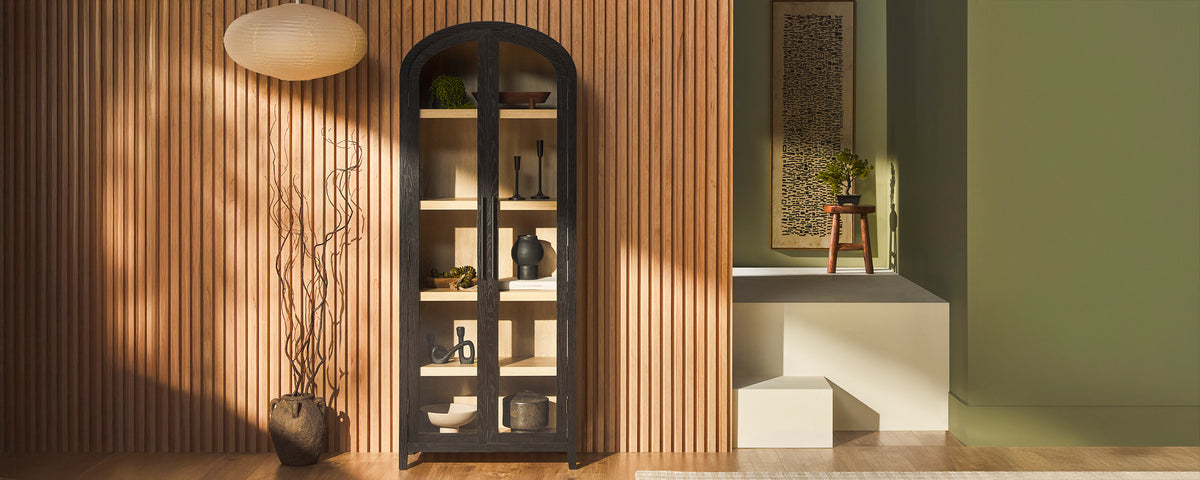A Guide to Scandinavian Design
Over 100 years ago, the seeds of Scandinavian design began to sprout. This style has gracefully weathered the waxing and waning nature of trends to remain a prominent, timeless figure in the interior design pantheon. Its longevity stems not only from its appearance, but from the philosophies it is built upon: accessibility, functionality, nature, and comfort.

History
Scandinavian design originated in Northern Europe’s Nordic countries. This includes Sweden, Norway, Denmark, Finland, and Iceland.
The roots of Scandinavian design can be traced back to 1914, when the Danish Company for Decorative Arts launched a magazine titled Skønvirke (“Graceful Work”). The publication focused on promoting local crafts and design that is accessible to all. This was seen as a pragmatic response to the lavish and intricate Art Nouveau style that had recently fallen out of fashion.
Between 1930 and 1970, the Golden Age of Scandinavian design flourished. Leading up to the 1930s, Nordic designers such as Alvar Aalto, Poul Henningsen, Arne Jacobsen, Borge Mogensen, Verner Panton, Hans J. Wegner, and Maija Isola pioneered a distinguishable Scandinavian style. Their mediums included architecture, furniture, textiles, and lamps. From 1954 to 1957, the “Design in Scandinavia” exhibition toured the United States and Canada. There, the term “Scandinavian design” was coined, and this humble style was thrust into the world spotlight.
Ripples of the Great Depression and two World Wars within the same century sparked a shift toward pared-down ideals and kept them afloat. Creators of all vocations embraced Modernism and sought simplified, practical, and egalitarian design. Nordic designers grew parallel to those Modernist ideals while tending to the needs of their environment, creating a flavor all their own.

Characteristics
The unique appearance of Scandinavian design is inseparable from its geographic origins, history, and culture. During long winter months, daylight in the Nordics is limited to just a few hours a day. To optimize what little time with the sun they get, designers favor white, light greys, and other pale colors that reflect the rays and brighten a room. Glimpses of bright colors can occasionally be found in carefully-selected art, cushions, ceramics, etc.
To allow sunlight to pour into a space unobstructed, windows are large and usually have minimal to no coverings. When the sun goes down, rooms are illuminated with warm-hued lamps or pendant fixtures, candles, and fireplaces that provide comfort amidst the cool climate.
In the fallout of world wars and economic crisis, limited material and financial resources encouraged Northern European designers to use what was available to them, and only as much as was necessary. The result is sleek and unadorned furniture, as well as minimally-decorated interiors where every piece serves a purpose. Scandinavian decorators prefer to carefully curate a few loved and functional pieces that will last a lifetime. Decor is placed with function in mind, even if that function is simply to increase warmth and happiness. Potted plants, candles, or a pair of glasses on a nightstand all exist as something that is used and appreciated in a comfortable, lived-in space.
To take advantage of smaller Nordic homes, interiors remain fairly open and clutter is kept to a minimum. This promotes unencumbered movement, and allows an area to be adapted for many uses. It is common for a room or piece of furniture to serve more than one purpose in a Scandinavian home. Dining tables can multitask as craft stations and social hubs, while drinks rest on a coffee table with built-in storage. Furniture is selected based on how a room will be used and by how many, careful to avoid unnecessary excess.
Nature is highly-valued among Scandinavian decorators in appreciation for the land around them. This manifests in light-colored wood floors and furniture, hemp area rugs, woven baskets, or leather cabinet pulls. Potted plants and flowers are often placed within a space to promote life and warmth. These organic colors, materials, and shapes beautifully harmonize with otherwise crisp and unembellished interiors.

Principles
Function and accessibility to the everyman are fundamental Scandinavian values. Compared to its ostentatious Art Nouveau predecessor, where a highly-decorated space was a status symbol that only the wealthy could obtain, Scandinavian style insists that beauty is found in simplicity, and that beauty should be attainable by all.
Attainability should not come at the expense of quality, however. Industrialization and mass production arrived to the Nordic area later than other nearby countries, preserving the region’s emphasis and pride on handcrafted, long-lasting goods. Machine production was eventually married with tradition to create pieces that are both beautiful and available to all.
The characteristics of Scandinavian design aim to achieve the Swedish ideal of lagom (lah-gohm). Roughly translated as “just the right amount,” “moderation,” or “suitable,” lagom is a lifestyle. It is the conscious choice to avoid excess without completely depriving oneself of comfort and pleasure. This could mean taking a small slice of cake instead of the whole cake or none at all. It could mean work-life balance. In the home, lagom is practiced by keeping a space uncluttered and efficient, but still welcoming.
And to make a reserved Scandinavian interior feel welcoming, look no further than hygge (hoo-guh). Hygge is a Danish word meaning “a quality of coziness and comfortable conviviality that engenders a feeling of contentment or well-being.” Clarity and a high quality of life are achieved through calming atmospheres and experiences. Homes in particular should be a center for relaxation and spending time with people you love. Sunlight during the day, warm candlelight at night, cozy blankets, natural textures, family dinners at spacious tables, and cups full of warm beverages all embody hygge at home.
Steeped in history and anchored by cultural values, Scandinavian design has proven itself as an evergreen movement that isn’t going anywhere anytime soon. Those who seek to simplify their lifestyle while still feeling comfortable may find themselves feeling right at home in a Scandinavian sanctuary. To show us your Scandinavian-inspired space, tag Walker Edison on social media.



